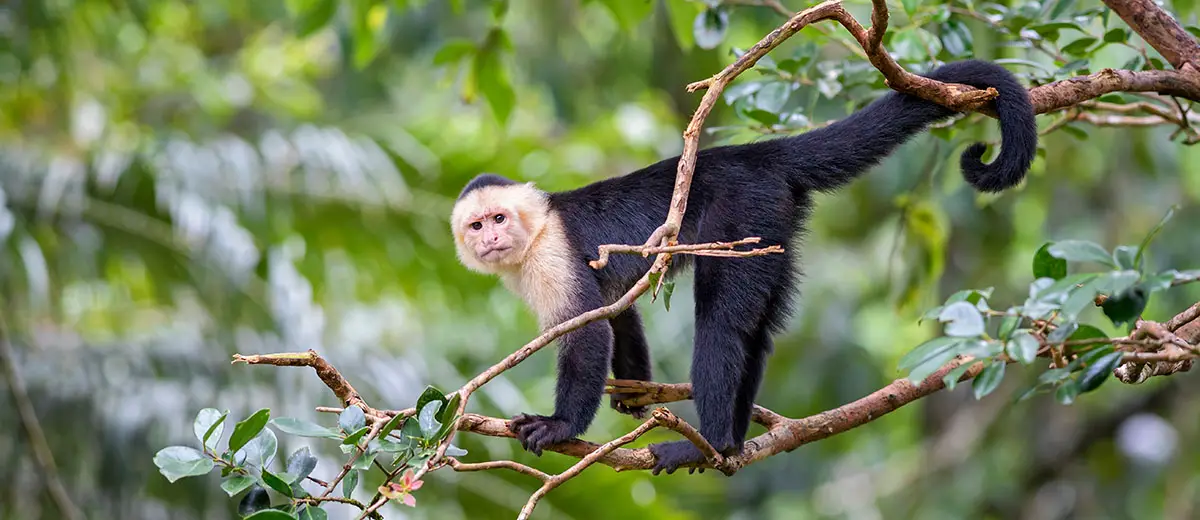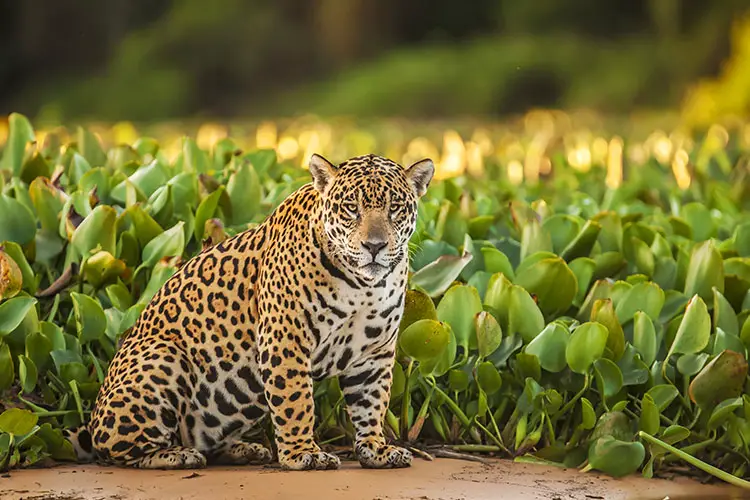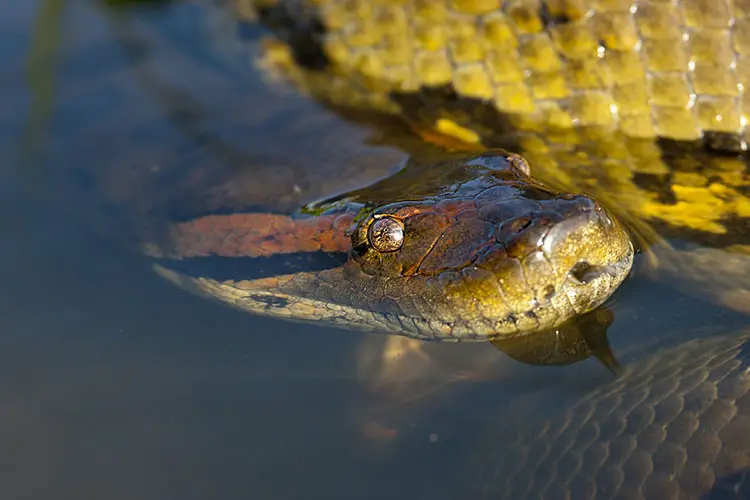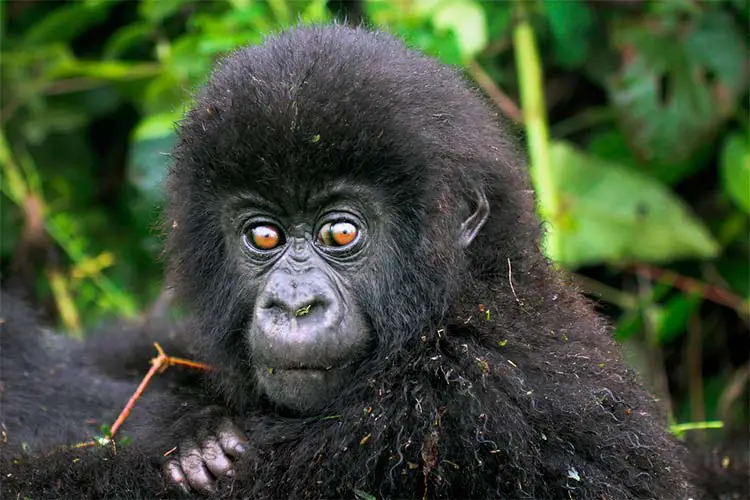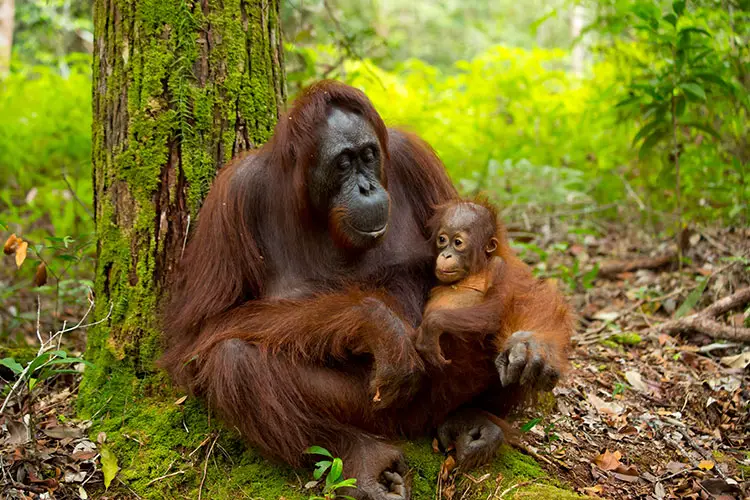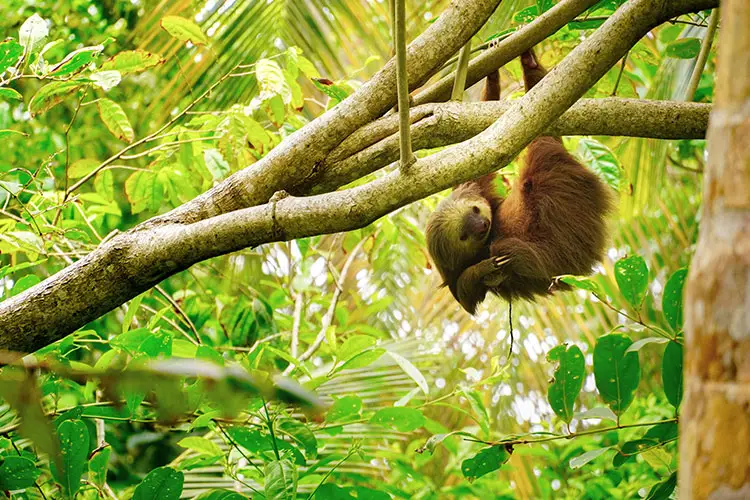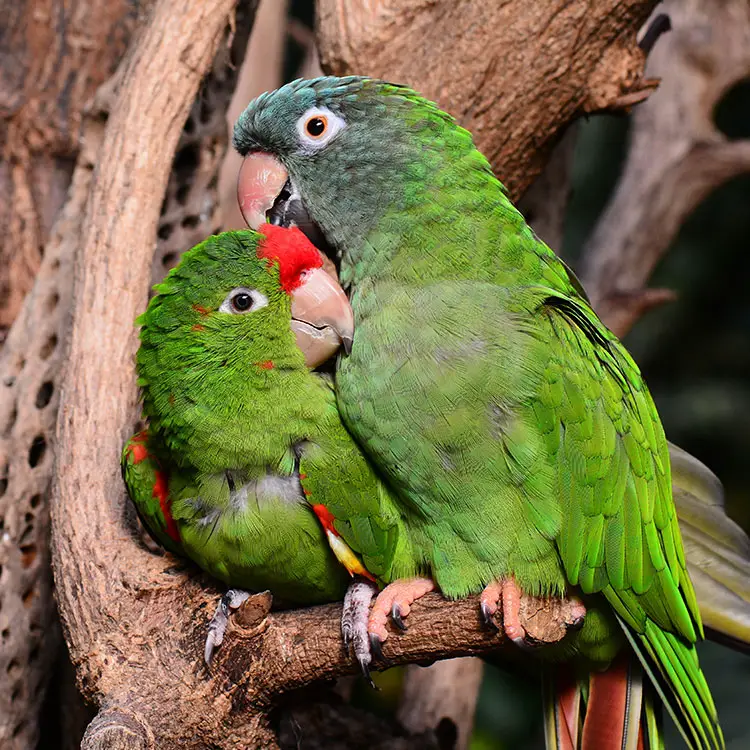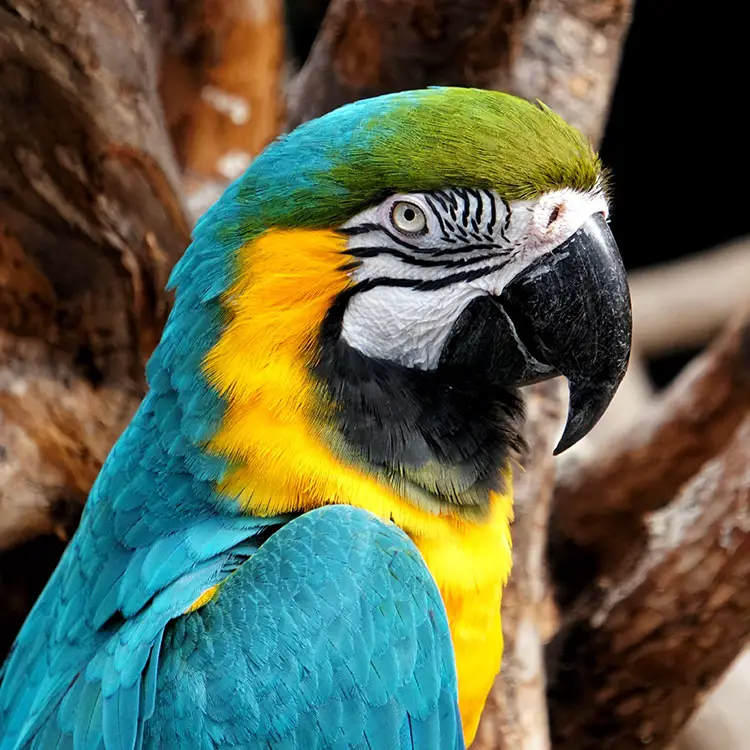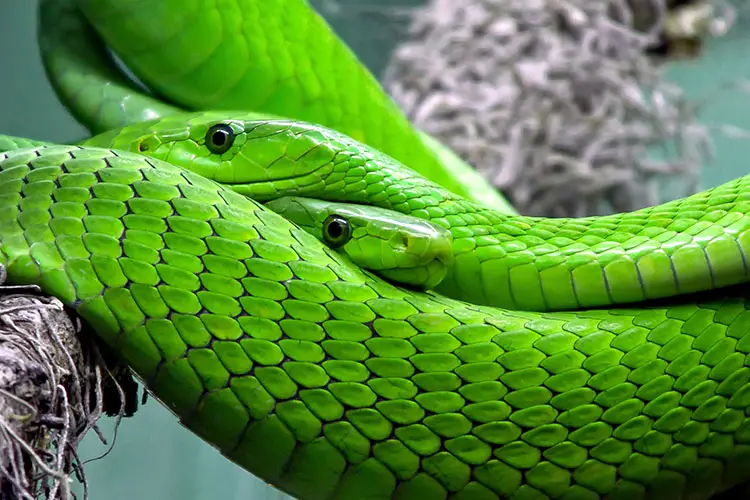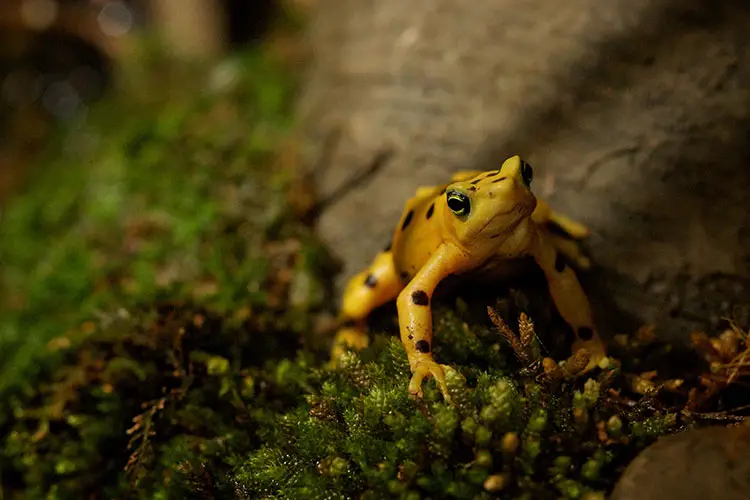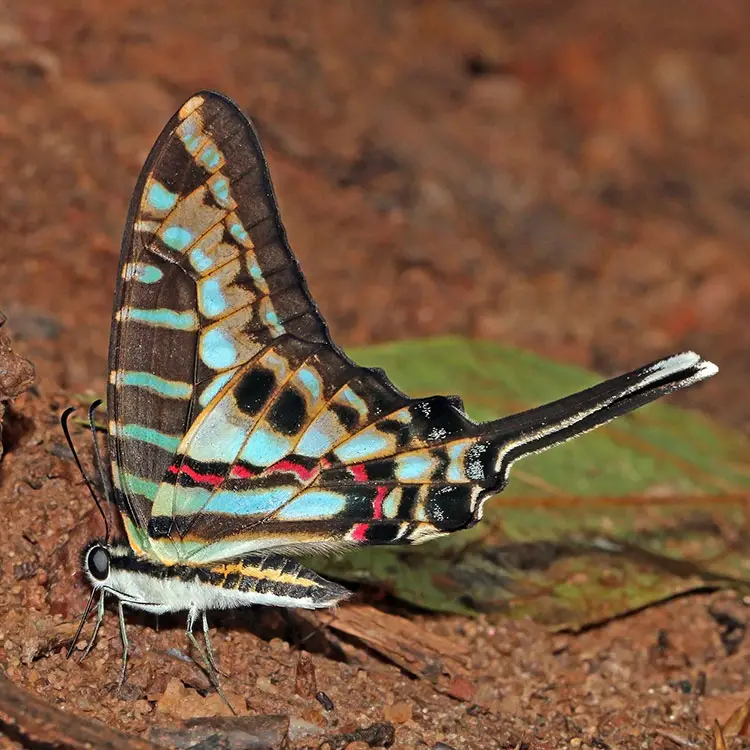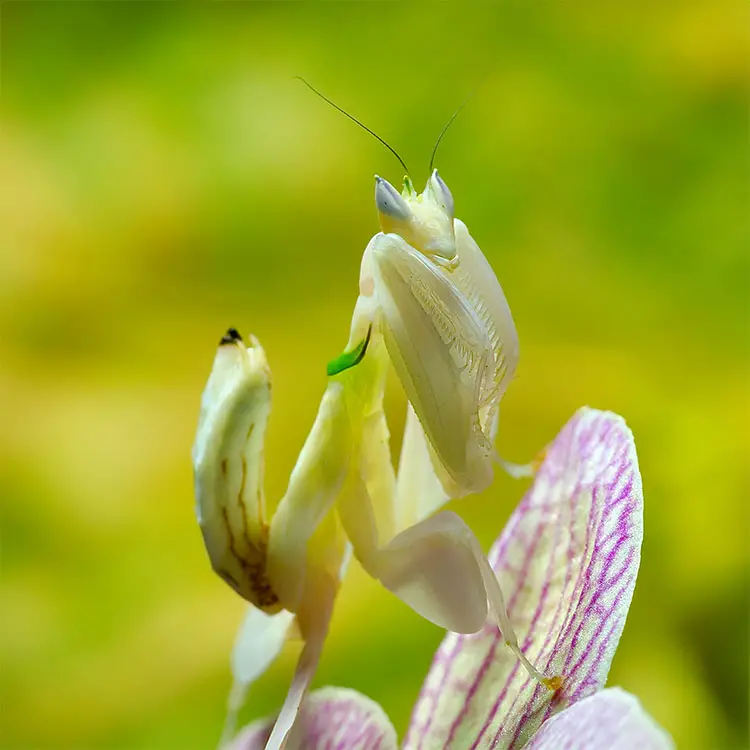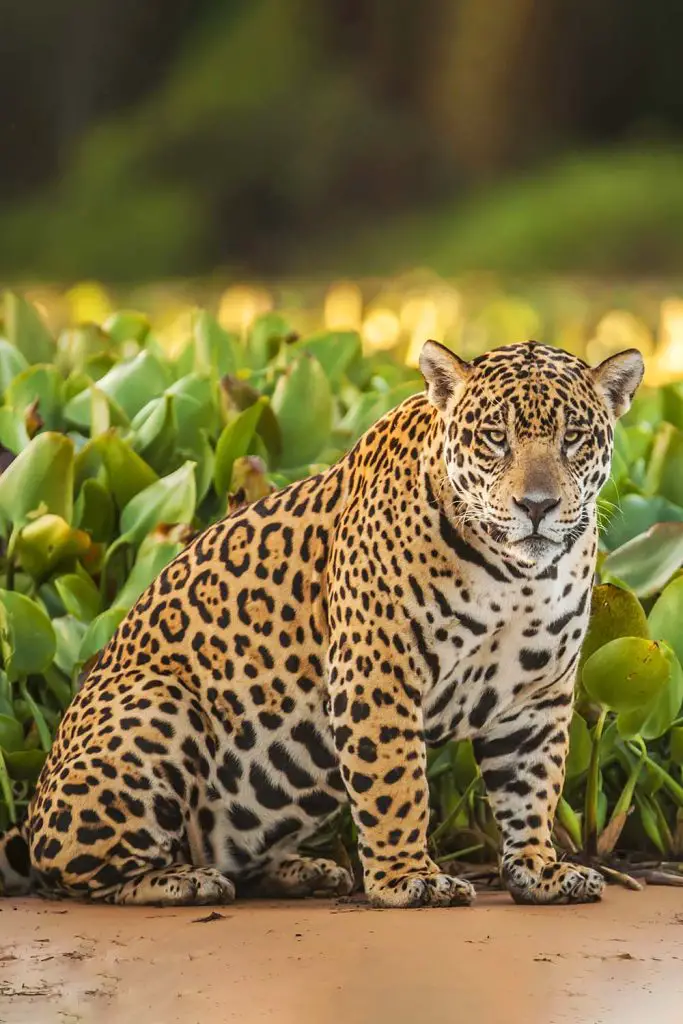Animals of the Tropical Forest Biome aka Rainforest
Realistically, the animals of the rainforest could be a completely separate article; this biome is famous for its biodiversity. In fact, the world’s top three most biodiverse countries—Brazil, Colombia and Indonesia—all contain vast swaths of rainforest. These hubs of biodiversity receive the most precipitation of any biome and can be broken down into several layers. The emergent layer contains the tops of the tallest trees such as kapok, which grows upwards of 200ft. Beneath lies the canopy layer—containing most of the wildlife—home to custard apple trees (which sounds delicious!) and the cashew-bearing Anacardium Excelsum. Due to the density of the canopy layer, both the understory layer and the forest floor are largely starved of light and therefore contain much smaller (but no less delicious!) vegetation. The understory layer includes banana, fig and palm trees, while the forest floor is coated in ferns, vines and flowers such as orchids.
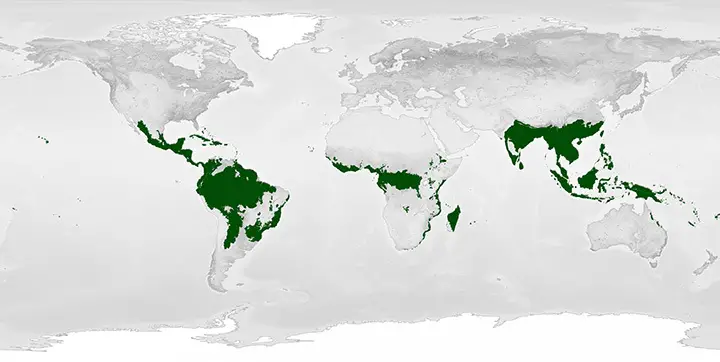
Tropical Forest Facts
- Characteristics: Warm, very high precipitation & tall, dense foliage
- Temperature Range: 20°C / 68°F to 25°C / 77°F
- Precipitation: 2,000 to 10,000 millimeters / 79 to 394 inches of rain per year
- Vegetation: Kapok, banana & fig trees, vines, ferns and flowers
Both tigers and jaguars are well-known for calling the rainforest their home. Tigers are located in Asia, in the tropical forests of countries like India, Myanmar and Indonesia, whereas jaguars are located in the Americas, from the jungles of Mexico to the Brazilian Amazon. Jaguars are the third biggest of all cat species—after tigers and lions—and are terrifyingly agile, famously hunting caiman on the banks of the Amazon. The world’s largest snake, the anaconda—measuring up to 10m / 30ft and weighing up to a staggering 250kg / 550 lbs!—is also known to hunt caiman as well as wild pigs, deer, smaller mammals and birds.
Left – Jaguar in the Brazilian Amazon & Right – Anaconda lurking in the water
Although not exclusive to the rainforest, the range of the primate family is also generally found between the Tropic of Cancer and the Tropic of Capricorn. Of the great apes—our closest relatives—chimpanzees and gorillas inhabit the rainforests of Central Africa, whereas the famously docile Orangutan is found on the islands of Borneo and Sumatra. The tropical forests of the Americas are home to New World Monkeys, including capuchins, tamarins and howler monkeys. Primates feed on plant matter such as fruits, leaves and nuts as well as other animals including small birds, rodents and reptiles.
Left – Baby gorilla in Congo & Right – Orangutan in the jungles of Borneo, Indonesia
The primary consumers of the rainforest are an odd-looking bunch! Anteaters, sloths, wild pigs and tapir roam the forest floor in search of sustenance. Anteaters and sloths are both from the order Pilosa—from the Latin word pellis, which means hairy—and are found only in the Americas. Sloths are well-known for travelling at excruciatingly slow speeds of up to 4m / 13ft per minute (it’s a wonder these adorable creatures even exist in the same biome as jaguars and anacondas!). Tapirs are another odd-looking mammal who live in the tropical forests of the Americas, they eat fruits, leaves and berries and are known to eat up to 40kg / 85lbs of vegetation in a single day.
Left – Sloth hanging from a tree in Costa Rica | Unsplash: Adrián Valverde & Right – Tapir calf with stripes | Flickr: Eric Kilby
Aside from beautiful orchids and other flowering plants, birds bring colour to the rainforests, often found in exotic blues, reds and yellows. Parrots are one of the most widespread and varied families of birds, ranging from macaws in the Americas, cockatoos in Australasia and lovebirds in Africa. Macaws are a group of New World parrots who are famed for their bright plumage; the rather unimaginatively named blue and yellow macaw can live up to 35 years in the wild and display a spectacular blue back atop a yellow breast and underwings. Lovebirds are a group of Old World parrots known to form strong monogamous relationships between mating pairs. They have green plumage on their body with the facial plumage and beak varying in colour between species.
Left – Mating pair of lovebirds | Pixabay: Jondolar Schnurr & Right – Blue and yellow macaw | Unsplash: Zachary Spears
While many of the other biomes we have discussed are not overly hospitable for reptiles and amphibians, these creatures thrive in the tropical forest biome. Snakes are perhaps the most well-known reptile in the rainforest and can kill their prey in one of two ways. Boas—including the aforementioned anaconda—and pythons will initially bite their prey but kill by constriction. Other species of snake kill their prey with potent venom including the green mamba and various members of the bush viper genus. Many frogs within this biome are also poisonous, although the secretion of their venom is used as a self-defence mechanism. Poisoned dart frogs are a family of amphibians found in Central and South America, often displaying vibrant coloured patterns, used to warn predators of their venomous capabilities.
Left – Aww! Even green mambas can look romantic! Pixabay: Foto-Rabe & Right: Poison dart frog | Flickr: Keith Kissel
Insects are another group of animals that flourish in the rainforest. Entire armies of ants are known to roam the forest floor, while swarms of bees make their nests higher up in the forest canopy. One of the most interesting insects of the tropical forest biome is the praying mantis, which actually refers to an entire family of mantises containing over 2,400 species. These insects are known to camouflage exceptionally well into their respective environments, a trait they use to ambush smaller unwitting insects. Butterflies are plentiful in this biome and are also found in a variety of colours and patterns. The black swordtail—also known as the mamba swordtail—is a particularly striking example found in the tropical forests of Africa.
Left – Turquoise-spotted swallowtail, Bobiri Forest, Ghana | WikiCommons: Charles J. Sharp & Right – Malaysian orchid mantis | WikiCommons: Luc Viatour
Excuse me! Are you on Pinterest?! Here are a couple of pins!
